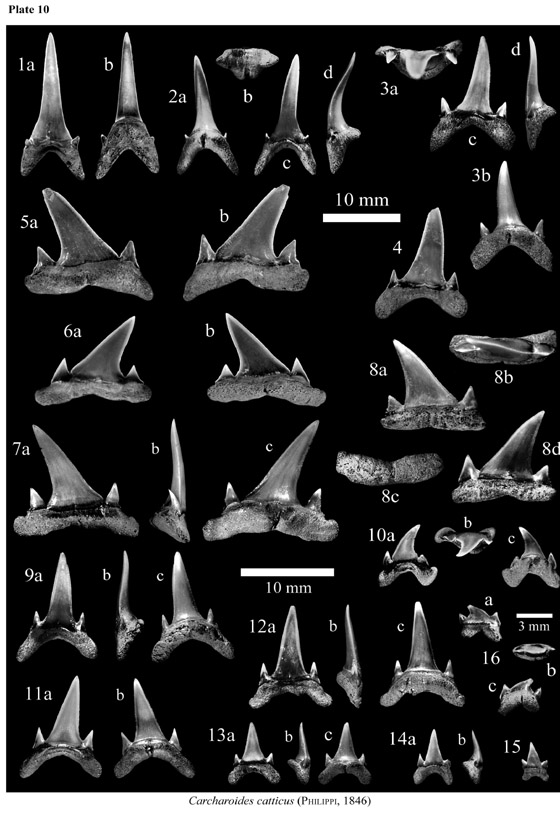
|

|
PALAEONTOS 21Price: non-members: 40 euros (plus postage); members: 35 euros (plus postage) Bor T., Reinecke T. & Verschueren S., 2012, Miocene Chondrichthyes from Winterswijk - Miste, the Netherlands ISSN: 1377-4654(136 textpages, 18 textfigures, 5 tables, 58 plates)Summary: Some 50 species of chondrichthyan taxa (Elasmobranchs: sharks and batoids; Holocephaleans: chimaeras) are described from temporary excavations in the very fossiliferous, glauconite-rich layers of the Miste Bed, Aalten Member of the Breda Formation, early Langhian (Middle Miocene), at Winterswijk-Miste in the eastern part of The Netherlands. In the Winterswijk area, the Miste Bed forms the base of the Breda Formation and discordantly overlies the Winterswijk Member of the Rupel Formation, Rupelian (Early Oligocene). The recovered elasmobranch remains are mainly isolated teeth and less commonly gill rakers, rostral and caudal spines, thorns, dermal denticles and vertebral centra. Holocephalean remains are represented by a single mandibular plate. A new extinct stingray species, Plesiobatis vandenboschi, is described, and several chondrichthyan species are documented for the first time from the Neogene of The Netherlands. The odontaspidid species Carcharias vorax (Le Hon, 1871) is assigned to the recently resurrected genus Araloselachus. Most shark and ray species of the Miste fauna are closely related to present-day benthopelagic taxa (Notorynchus, Squalus, Pristiophorus, Carcharias, Chaenogaleus, Paragaleus, Carcharhinus, Galeocerdo, Sphyrna, Aetobatus and Myliobatis) or benthic taxa (Squatina, Scyliorhinus, Raja, Rostroraja, Dasyatis and Taeniurops) dwelling in warm-temperate and subtropical continental shelf seas. Species related to living pelagic taxa (Alopias, Cetorhinus, Isurus and Mobula) preferring oceanic of combined oceanic/shelf habitats are few and rarely encountered. Meso- and bathypelagic taxa, e.g. Hexanchus and Echinorhinus, and tropical/subtropical genera, e.g. Ginglymostoma and Pristis, are absent. The Miste fauna is the most diverse and abundant autochthonous chondrichthyan fauna thus far reported from the Neogene of The Netherlands. Reworked shark and batoid teeth in the basal layers of the Miste Bed present evidence of the former presence of Burdigalian (Early Miocene) sediments on top of the Rupel Formation in the Winterswijk area. |
|
ORDER INFORMATION:please contact us at: palaeontos@gmail.com |
|